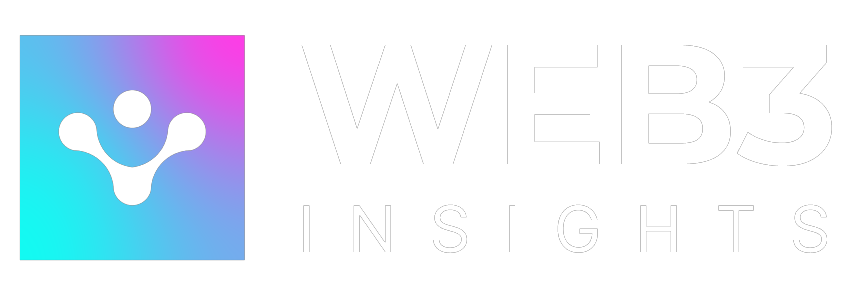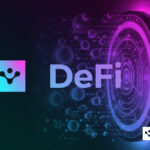In the ever-evolving landscape of the internet, technological advancements continue to reshape the way businesses connect with their audience. Web 3.0 stands as the next frontier, promising a paradigm shift in marketing strategies, engagement, and user experience. This article aims to explore the concept of Web 3.0 marketing, its implications, and how businesses can prepare for this groundbreaking shift. In an increasingly competitive digital space, staying ahead of the curve is crucial for any brand’s success.

1. What is Web 3.0 and how does it work?
Web3, often dubbed as the next phase of the internet, represents a decentralized and user-centric model that seeks to redefine the way we interact and transact online. Unlike its predecessor, Web2, which is largely centralized and controlled by a few dominant entities, Web3 aims to empower users by putting them at the center of the digital ecosystem. In addition, Web3 utilizes technologies such as blockchain, artificial intelligence, and machine learning to create a more secure, transparent, and personalized experience for users.
One of the key drivers behind the emergence of Web3 is the rapid growth of data and its potential to revolutionize the way businesses operate. With the increasing amount of data users generate daily, there is a need for a more efficient and secure way to manage this data. This is where blockchain technology comes into play, providing a decentralized platform for storing and sharing information securely.

- How Web3 Works
At the core of Web3 is blockchain technology, which forms the foundation for its decentralized structure. Blockchain enables the creation of a distributed ledger where transactions and data are stored across a network of nodes, ensuring transparency, immutability, and security.
Smart contracts, self-executing contracts with coded terms and conditions, play a pivotal role in Web3. These contracts automate and enforce agreements between parties without the need for intermediaries, fostering trust and efficiency in various digital interactions, such as financial transactions, ownership transfers, and more.
Moreover, Web3 leverages decentralized applications (dApps) that operate on a peer-to-peer network rather than relying on centralized servers. These applications run on the blockchain, providing users with greater control over their data and digital assets while reducing the dependency on intermediaries for services.
The integration of cryptographic principles, consensus mechanisms, and decentralized storage systems further fortifies Web3’s infrastructure, ensuring privacy, security, and censorship resistance.
2. What is Web 3.0 Marketing? How Will Web 3.0 Impact Businesses?

Web 3.0 Marketing refers to the evolving strategies and techniques used by businesses to engage with users and consumers in the decentralized and interconnected landscape of the Internet. Unlike its predecessors, Web 1.0 (focused on static web pages) and Web 2.0 (characterized by social media and user-generated content), Web 3.0 harnesses emerging technologies like blockchain, decentralized finance (DeFi), artificial intelligence (AI), the Internet of Things (IoT), and augmented reality (AR) to reshape digital marketing.
One of the fundamental shifts in Web 3.0 Marketing is the emphasis on decentralization and user empowerment. Blockchain technology enables transparent and secure transactions, fostering trust and enabling more direct interactions between businesses and consumers. Smart contracts facilitate automated, tamper-proof agreements, ensuring transparency in marketing campaigns, loyalty programs, and customer rewards.
Moreover, Web 3.0 Marketing thrives on personalization through AI-driven algorithms. Advanced data analytics allow for deeper insights into consumer behavior, enabling businesses to deliver highly targeted and personalized content and products. This personalized approach enhances user experience and increases customer engagement.
- Impact of Web 3.0 on businesses
The impact of Web 3.0 on businesses is multifaceted. Here are some key areas where it can make a significant difference:
Enhanced Trust and Transparency: Decentralized systems built on blockchain technology promote transparency, enabling businesses to build trust with consumers by providing verifiable information and secure transactions.
Direct Consumer Relationships: Web 3.0 fosters direct peer-to-peer interactions between businesses and consumers, cutting out intermediaries and allowing for more personalized, direct relationships. This shift can reshape marketing strategies and customer service approaches.
Tokenization and New Revenue Models: Tokenization allows for the creation of digital assets and unique tokens that represent ownership or access rights. This can lead to new revenue models, loyalty programs, and innovative ways to engage customers.
Data Privacy and Security: With increased concerns about data privacy, Web 3.0’s focus on decentralized networks and encrypted transactions can enhance data security and give users more control over their personal information.
Innovative Content Creation: Emerging technologies like AR and VR can revolutionize content marketing, enabling businesses to create immersive and interactive experiences for their audience.
Overall, Web 3.0 Marketing offers businesses opportunities to create more personalized, transparent, and engaging consumer experiences. Adapting to these emerging trends and technologies will be crucial for companies seeking to thrive in the evolving digital landscape.
3. Key Features of Web 3.0 / Web3 Marketing

The key features of Web 3.0 Marketing are:
- Semantic Web (SW)
The Semantic Web, a cornerstone of Web 3.0, focuses on organizing and structuring data to enhance machine understanding. This allows for more accurate and contextually relevant search results, benefiting marketers in delivering highly targeted content to users.
- Artificial Intelligence (AI)
AI-driven technologies in Web 3.0 enable predictive analytics, chatbots for customer service, and personalized recommendations. Marketers can leverage AI to analyze vast amounts of data, optimize campaigns, and provide more tailored experiences.
- Ubiquitous
Web 3.0 blurs the lines between physical and digital realms, offering seamless connectivity across various devices and platforms. Marketers can engage users across multiple touchpoints, ensuring consistent brand experiences.
- Decentralization
Decentralization via blockchain technology ensures data privacy, security, and ownership for users. This shift fosters trust and enables marketers to create campaigns based on authentic and verifiable data.
4. The Role of Blockchain on Web 3.0 Marketing
Blockchain technology is integral to Web 3.0 marketing, providing a secure and transparent framework for transactions, smart contracts, and data management. It enables:
- Tokenization and NFTs: Non-Fungible Tokens (NFTs) revolutionize digital ownership, allowing brands to tokenize unique assets, creating new revenue streams and engagement opportunities.
- Enhanced Security: Blockchain’s decentralized nature safeguards user data, reducing the risks of data breaches and fraudulent activities.
- Smart Contracts: Automating agreements through smart contracts ensures transparency, reducing intermediary costs and streamlining marketing collaborations.
5. How to Prepare Your Brand for Web 3.0 Marketing
To thrive in the era of Web 3.0, businesses must adapt and embrace new strategies:
- Follow Web 3.0 Trends:
Stay updated with emerging technologies and trends shaping Web 3.0, such as AI advancements, blockchain applications, metaverse developments, and decentralized finance (DeFi).
- Content Creation – Add NFTs:
Explore integrating NFTs into your content strategy. Create unique and valuable digital assets that resonate with your audience, fostering engagement and offering exclusive experiences or collectibles.
- Foster User Engagement:
Embrace user participation by encouraging user-generated content, fostering community interactions, and leveraging decentralized platforms that empower users.
- Implement Blockchain Solutions:
Integrate blockchain-based solutions to ensure data security, transparency, and user privacy, building consumer trust and credibility.
6. Strategies for Web 3.0 Marketing Success
Web 3.0 marketing requires a shift in strategies and approaches to engage with consumers effectively. Here are some key strategies to succeed in the era of Web 3.0:

- Personalization through AI and Data Analytics:
Leverage AI-driven algorithms and advanced data analytics to understand consumer behavior, personalize content, and deliver tailored experiences. Moreover, use data to drive decision-making and optimize campaigns.
- Partnering with Influencers and Creators:
Collaborate with influencers and creators who have a strong presence in decentralized communities, enabling businesses to reach new and highly engaged audiences. This also allows for more authentic and organic marketing.
- Implementing Augmented Reality (AR) and Virtual Reality (VR):
Incorporate AR and VR technologies to create immersive experiences for consumers, allowing them to engage with products or services more effectively and personally. This can also be used for virtual events and product launches.
- Embracing Gamification and Metaverse:
With the rise of the metaverse, businesses can explore gamification and virtual experiences to engage with customers in new and innovative ways. This can enhance brand loyalty and foster a deeper connection with consumers. In this ever-evolving digital landscape, embracing the principles of Web 3.0 Marketing and staying ahead of the curve is crucial for businesses seeking to thrive in the future.
7. Conclusion
Web 3.0 offers a paradigm shift in the way businesses interact with consumers, providing opportunities for more personalized and transparent experiences. With its focus on decentralized networks, data privacy, and innovative technologies, Web 3.0 Marketing presents an exciting future for businesses looking to engage customers in meaningful ways. By adopting a proactive approach and embracing emerging trends and strategies, companies can stay ahead of the competition and succeed in the ever-evolving digital landscape. So, it is essential for businesses to adapt to these emerging trends and technologies in order to thrive and stay relevant in the competitive market. Let’s continue exploring and embracing new possibilities offered by Web 3.0 Marketing!
Explore further into the realm of Web 3.0 and Metaverse by checking out our website at web3insights.io. Stay updated by following us on Twitter, Instagram, and LinkedIn. We look forward to connecting with you there!








